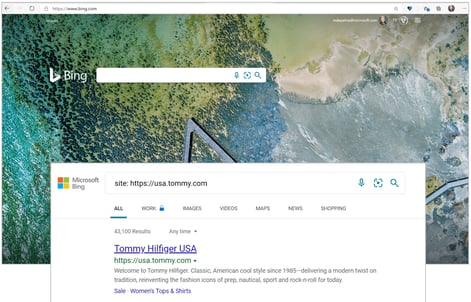8 Inclusive Advertising Tips for 2021, According to Microsoft's Head of Inclusive Marketing
Advertising can help create a direct connection between consumers and your brand, and is a critical component of marketing.
And inclusive advertising can yield dramatic results and increase brand trust, loyalty, and better overall brand perception. In fact, 64% of people said they are more trusting of brands that represent diversity in ads, and 85% of consumers said they will only consider a brand they trust.
Advertising that works hard for your company has never been more important as we come off the heels of a challenging year affecting all businesses. However, there is one concept that rang true for us all that can inform our approach in advertising for 2021 and beyond – that is, we are all interconnected and interdependent, both as consumers and as advertisers.
In this post, we'll provide eight tips curated from Microsoft's Marketing with Purpose Playbook to help you create more inclusive advertising, reach more customers, and grow your business.
Download Now: Free Ad Campaign Planning Kit
1. Showcase human diversity in your campaigns.
Inclusive advertising means having diversity authentically represented in your ads and promotions, while aligning it to your local market's composition of diversity. It also means considering the many dimensions of human diversity, including (but not limited to) age, gender, ethnicity, sexual orientation, location, language preference and gender expression.
Additionally, you'll be able to expand your ability to connect and tailor ad creative and promotions with your audience when you consider experiential diversity like ability, parental status, marital status, military status, affinities, and job function.
Ultimately, inclusive advertising is understanding with empathy who your customers are, representing them accurately, and more importantly, recognizing who you're excluding in your marketing materials.
2. Perform a landing page and website audit for audience diversity.
Inclusive advertising doesn't end with the ad. In fact, half of the customer experience with your advertising resides where you send them after they click — which means it's critical you demonstrate diversity in your landing pages or website, as well.
Considering 64% people are more likely to consider or purchase a product after seeing diversity or inclusion in advertising, it's critical you ensure your landing pages and website represent true diversity.
Does your website's collection of photos and images match the audience representation you created across your entire ad campaign? Does each inclusive advertisement point the customer after the click to the landing page that matches the inclusive spirit of the image creative? If not, it should.
However, while it's relatively easy to spot-check a landing page with the corresponding ad creative, how can you collectively evaluate your entire website for the right amount and variety of diversity?
For an easy way to review what images are across your site's web pages, simply use Bing.com and type in the search bar the command, "site:" and then add your website's URL after the colon.
For example, let's search Bing for the clothing brand Tommy Hilfiger, which looks like this in the search bar: "Site:https://usa.tommyhilfiger.com". Then, hit "Enter". Bing will produce a search engine results page indexing all your web pages:

Then click on the "images" in the search engine results page for your "site:" search in the navigation bar:
This will produce all the images found on the website. You can quickly scroll through to get a sense of the diversity — or lack of diversity — in the collection of images on your website.
Your audit can be used as a general website check, or a search for specific dimensions of diversity that you feel are underrepresented in your upcoming advertising campaign.
3. Align your advertising messaging to the nine feelings of inclusion.
Emotions are becoming increasingly linked with brand outcomes. As Maya Angelou once said, "I've learned that people will forget what you said, people will forget what you did, but people will never forget how you made them feel."
Comments
Post a Comment